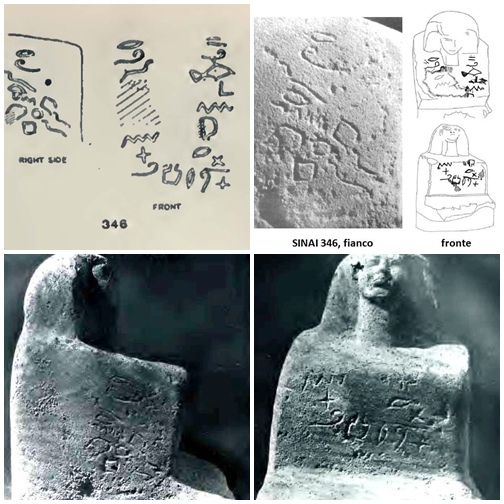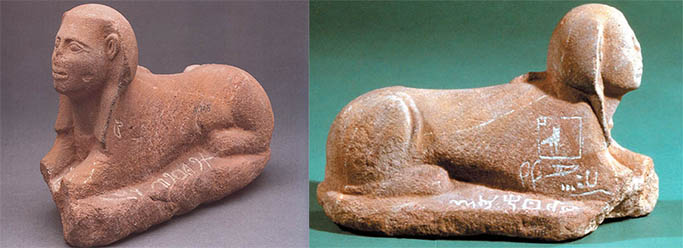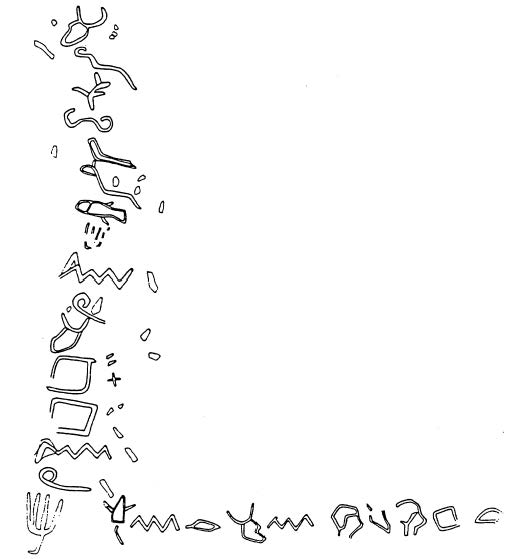Examples of writing
Sinai 346

Source: Grimme 1923 (available in archive.org)
Statuette from Hathor temple of Serabit el-Khadim.
The inscriptions are engraved on the top and front of the block and on its right side. There are three lines on the statuette:
The left-hand horizontal line reads ʿln[ʿm]x(x?)mtlbʿlt
and the right-hand line reads dldymrʿt
The text on the right side reads ʿlnʿmrbnqbn
The reconstruction of n[ʿm] is not certain even though it appears in the vertical line on the right side as well.
Possible translations are:
«For/as …[…] … for Baʿalat»
«This (is) of the Provider of the pasture» to be understood as epithet of the goddess Baʿalat.
«For Naʿam, the great among the miners»
Bibliography: L.D. Morenz 2019, 124-128.
Sinai 345

Source:
http://www.codex99.com/typography/11.html
Red sandstone sphinx, ca. 1800-1700 B.C., from the temple ruins at Serabit el-Khadim, currently on display in the British museum. The sphinx seems to be a votive gift to the goddess Hathor. The head of the sphinx was reattached. The hieroglyphs on the right shoulder read “Beloved of Hathor [Mistress of] turquoise”. The two Proto-Sinaitic inscriptions, repainted in modern time, read:
left base (from left to right): mʾhbʿlt often interpreted as mʾh(b) bʿlt «beloved of Lady»
right base (from left to right): hnd wz lbʿlt «this inscription/monument is for the Lady»
Bibliography: A. Wilson-Wright 2013; L.D. Morenz 2019, 196-204.
Sinai 357

Source: Beit Arieh 1978 fig. 6
Inscription on rock surface from mine L of Serabit el-Khadim.
The vertical line reads: ʾnttpndkmlʾbbmlk
The horizontal line reads: šmʿʾmr ʾrbʿ
L.D. Morenz 2019, 187-190 translates: «You, Shapan, stamp/crush Abimelek» and «He has heard the message: four».